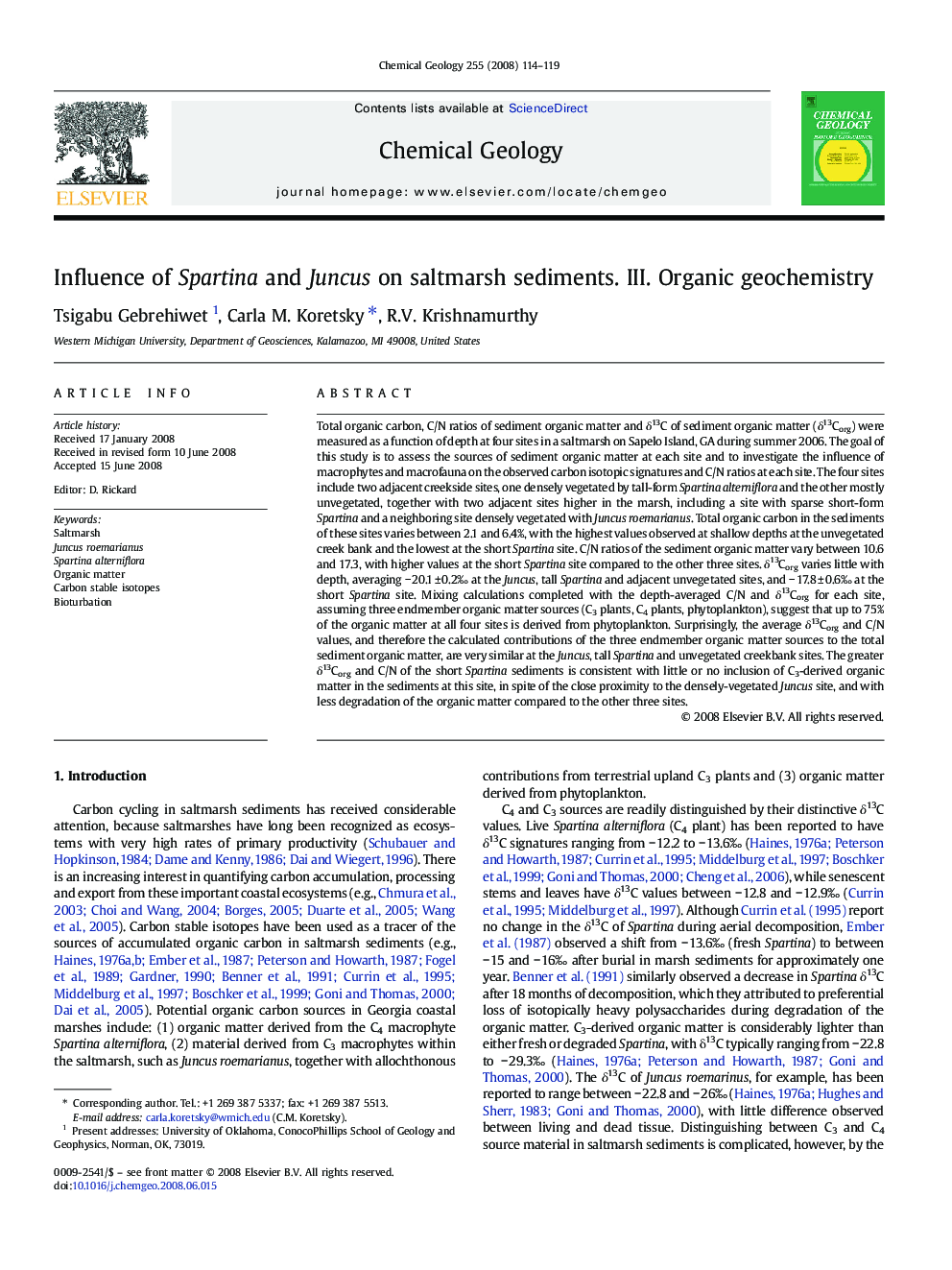| Article ID | Journal | Published Year | Pages | File Type |
|---|---|---|---|---|
| 4700672 | Chemical Geology | 2008 | 6 Pages |
Total organic carbon, C/N ratios of sediment organic matter and δ13C of sediment organic matter (δ13Corg) were measured as a function of depth at four sites in a saltmarsh on Sapelo Island, GA during summer 2006. The goal of this study is to assess the sources of sediment organic matter at each site and to investigate the influence of macrophytes and macrofauna on the observed carbon isotopic signatures and C/N ratios at each site. The four sites include two adjacent creekside sites, one densely vegetated by tall-form Spartina alterniflora and the other mostly unvegetated, together with two adjacent sites higher in the marsh, including a site with sparse short-form Spartina and a neighboring site densely vegetated with Juncus roemarianus. Total organic carbon in the sediments of these sites varies between 2.1 and 6.4%, with the highest values observed at shallow depths at the unvegetated creek bank and the lowest at the short Spartina site. C/N ratios of the sediment organic matter vary between 10.6 and 17.3, with higher values at the short Spartina site compared to the other three sites. δ13Corg varies little with depth, averaging − 20.1 ± 0.2‰ at the Juncus, tall Spartina and adjacent unvegetated sites, and − 17.8 ± 0.6‰ at the short Spartina site. Mixing calculations completed with the depth-averaged C/N and δ13Corg for each site, assuming three endmember organic matter sources (C3 plants, C4 plants, phytoplankton), suggest that up to 75% of the organic matter at all four sites is derived from phytoplankton. Surprisingly, the average δ13Corg and C/N values, and therefore the calculated contributions of the three endmember organic matter sources to the total sediment organic matter, are very similar at the Juncus, tall Spartina and unvegetated creekbank sites. The greater δ13Corg and C/N of the short Spartina sediments is consistent with little or no inclusion of C3-derived organic matter in the sediments at this site, in spite of the close proximity to the densely-vegetated Juncus site, and with less degradation of the organic matter compared to the other three sites.
